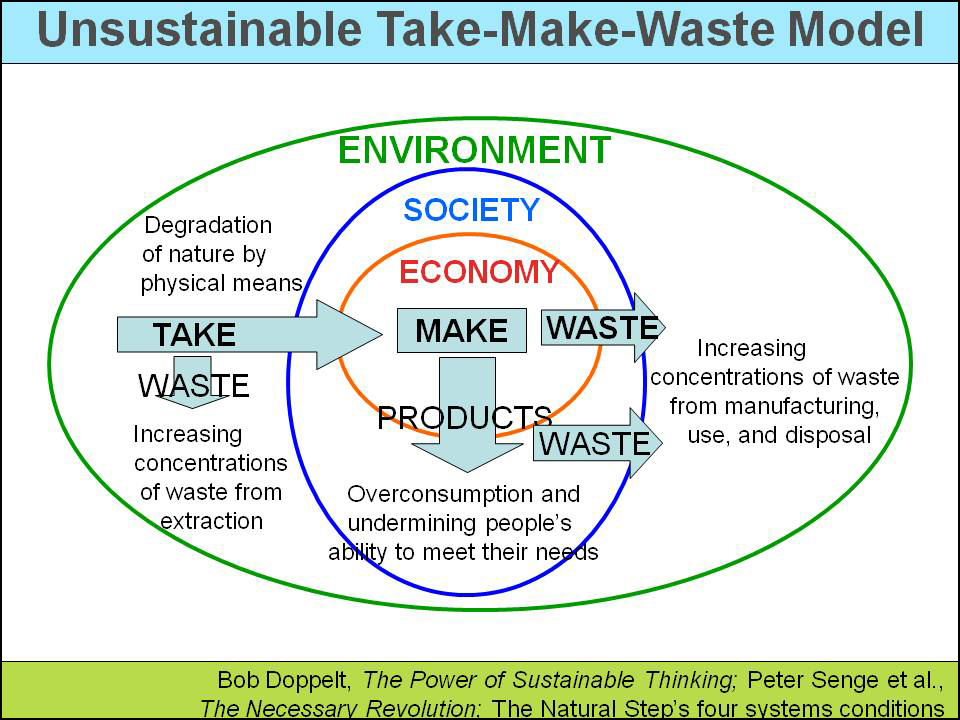pp. 48-52 Ecosystems and Natural Capital
Section 3.6 Ecosystems and Natural Capital
Built Capital: The Airline Industry
Built Capital: Spoil Material
Built Capital: Golden Rice
Built Capital: Water for Drinking
Above are 4 case studies. If you don't like one of them, I can provide you with another.
Your goal is to identify natural, human, and built capital within the system. The case studies provide you with the scenario at hand. You should use the information provided to help you make decisions, but you DO NOT have to complete the case study. You must organize the information you find into the two graphics provided yesterday.
=======
11/28/2012
Digitize the pyramid you made yesterday, and explain how you used the second graphic to identify the waste in your built capital. WHAT is the waste, and HOW WIDELY does it impact your scenario. Be specific.
Each of these scenarios has some degradation of natural capital that has occurred. Identify the problem. What need to happen, specifically, to encourage sustainability:
- within the ecosystem found in the scenario?
- within two specific cycles found in the scenario?
- to the attitudes or behaviors of the people found in this scenario?
Reflect on the built capital and its impact on the local community. How will we best change attitudes and behaviors in this scenario to encourage sustainability? You may choose voluntary actions, economic policies, or government actions.
Summarize the pyramid, and the information you found today in a 6-slide (maximum) google presentation to be shown to the class on Thursday, 1/2 hour into the period.
Grading
Completeness of pyramid: 5 pts
Identification of waste impact: 5 pts.
Sustainability solutions: 15 pts
Action Steps: 5 points
Presentation quality: 10 points
Grading
Completeness of pyramid: 5 pts
Identification of waste impact: 5 pts.
Sustainability solutions: 15 pts
Action Steps: 5 points
Presentation quality: 10 points




